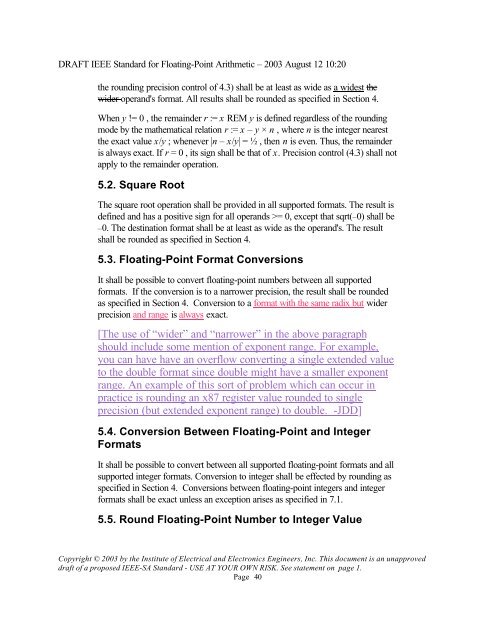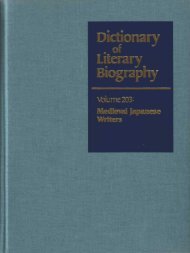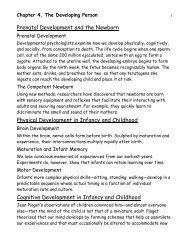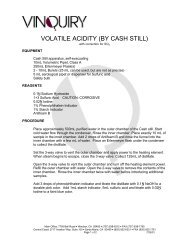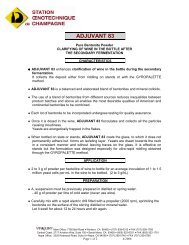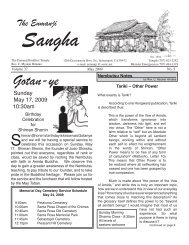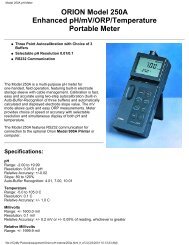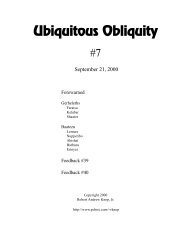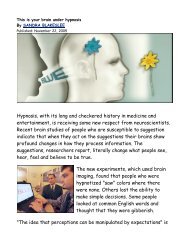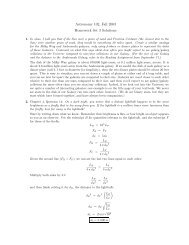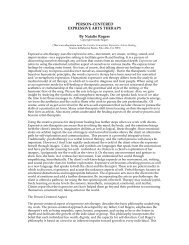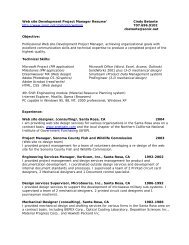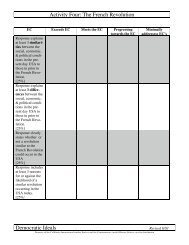DRAFT IEEE Standard for Binary Floating-Point Arithmetic - Sonic.net
DRAFT IEEE Standard for Binary Floating-Point Arithmetic - Sonic.net
DRAFT IEEE Standard for Binary Floating-Point Arithmetic - Sonic.net
Create successful ePaper yourself
Turn your PDF publications into a flip-book with our unique Google optimized e-Paper software.
<strong>DRAFT</strong> <strong>IEEE</strong> <strong>Standard</strong> <strong>for</strong> <strong>Floating</strong>-<strong>Point</strong> <strong>Arithmetic</strong> – 2003 August 12 10:20<br />
the rounding precision control of 4.3) shall be at least as wide as a widest the<br />
wider operand's <strong>for</strong>mat. All results shall be rounded as specified in Section 4.<br />
When y != 0 , the remainder r := x REM y is defined regardless of the rounding<br />
mode by the mathematical relation r := x – y × n , where n is the integer nearest<br />
the exact value x/y ; whenever |n – x/y| = ½ , then n is even. Thus, the remainder<br />
is always exact. If r = 0 , its sign shall be that of x. Precision control (4.3) shall not<br />
apply to the remainder operation.<br />
5.2. Square Root<br />
The square root operation shall be provided in all supported <strong>for</strong>mats. The result is<br />
defined and has a positive sign <strong>for</strong> all operands >= 0, except that sqrt(–0) shall be<br />
–0. The destination <strong>for</strong>mat shall be at least as wide as the operand's. The result<br />
shall be rounded as specified in Section 4.<br />
5.3. <strong>Floating</strong>-<strong>Point</strong> Format Conversions<br />
It shall be possible to convert floating-point numbers between all supported<br />
<strong>for</strong>mats. If the conversion is to a narrower precision, the result shall be rounded<br />
as specified in Section 4. Conversion to a <strong>for</strong>mat with the same radix but wider<br />
precision and range is always exact.<br />
[The use of “wider” and “narrower” in the above paragraph<br />
should include some mention of exponent range. For example,<br />
you can have have an overflow converting a single extended value<br />
to the double <strong>for</strong>mat since double might have a smaller exponent<br />
range. An example of this sort of problem which can occur in<br />
practice is rounding an x87 register value rounded to single<br />
precision (but extended exponent range) to double. -JDD]<br />
5.4. Conversion Between <strong>Floating</strong>-<strong>Point</strong> and Integer<br />
Formats<br />
It shall be possible to convert between all supported floating-point <strong>for</strong>mats and all<br />
supported integer <strong>for</strong>mats. Conversion to integer shall be effected by rounding as<br />
specified in Section 4. Conversions between floating-point integers and integer<br />
<strong>for</strong>mats shall be exact unless an exception arises as specified in 7.1.<br />
5.5. Round <strong>Floating</strong>-<strong>Point</strong> Number to Integer Value<br />
Copyright © 2003 by the Institute of Electrical and Electronics Engineers, Inc. This document is an unapproved<br />
draft of a proposed <strong>IEEE</strong>-SA <strong>Standard</strong> - USE AT YOUR OWN RISK. See statement on page 1.<br />
Page 40


